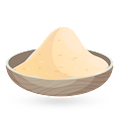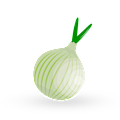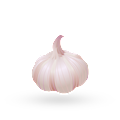MAIN INGREDIENTS
Hamamatsu is a popular variety of Japanese gyoza filled with cabbage, onions, pork, and selected seasonings. It is characterized by a unique frying style in which cooks arrange gyoza in a circular pattern (hanetsuke, a technique in which a crispy bottom connects all the gyozas) so that they can fry as many snacks as possible at the same time.
It is very popular to pair Hamamatsu gyoza with a topping of bean sprouts.
MAIN INGREDIENTS
The famous Japanese gyoza are crescent-shaped dumplings that have originated from the traditional Chinese jiaozi dumplings. The recipe was slightly altered to accommodate the Japanese taste, and gyoza soon became one of the favorite Japanese meals.
They consist of a thin wrapper made with wheat flour, eggs, and water, which is then stuffed with a mixture of meat and vegetables. The ingredients used in the stuffing are regionally influenced, but most commonly include minced pork or chicken, cabbage, chives, a substantial amount of garlic, ginger, and green onions.
VARIATIONS OF Gyoza
MOST ICONIC Gyoza
View moreAjitsuke tamago is a traditional dish consisting of soft-boiled eggs that have been soaked in mirin and soy sauce. The egg yolks should be custardy if properly prepared, and the eggs are eaten as a snack, a part of bento, or more commonly, enjoyed as a ramen topping.
The eggs are boiled for a few minutes so that the yolk remains runny, and they are then chilled and soaked (overnight or for a few days) in a combination of water, mirin, and soy sauce. This is the basic preparation, and some cooks might add their own secret ingredients to the marinade to make the eggs more flavorful.
MAIN INGREDIENTS
Similar to an omelet or a pancake, okonomiyaki is an immensely popular Japanese dish. The batter is made with eggs, flour, water, grated yam, and shredded cabbage. Additional ingredients such as fish, seafood, meat, vegetables or cheese are also occasionally added to the mix.
The batter is then pan-fried, similar to a pancake, and finally garnished with condiments such as Japanese mayonnaise, pickled ginger, fish or seaweed flakes, and topped with a sauce similar to the thick Worcestershire sauce. The dish is eaten everywhere in Japan, but it is usually associated with the Kansai region.
VARIATIONS OF Okonomiyaki
MOST ICONIC Okonomiyaki
View moreThe small, round takoyaki are one of the most famous Japanese snacks, made with a simple egg batter that is enriched with diced octopus pieces. These tiny balls get their signature shape from the traditional iron pan in which they are grilled. The pan is filled with small round molds in which the batter is poured and swirled until the traditional round shape has been developed.
The creamy egg mix consists of wheat flour, soy sauce, and dashi stock, and after it has been poured into the sizzling molds it is topped with tender octopus pieces. Sliced scallions, pickled ginger, crispy fried tenkasu pieces, and dried fish flakes are often incorporated to elevate the flavors of the dish.
MOST ICONIC Takoyaki
View moreOkonomiyaki is a traditional dish that consists of batter and shredded cabbage. Two main variations come from Osaka (Kansai-style) and Hiroshima. The Hiroshima-style okonomiyaki is not prepared by mixing the ingredients together like the Osaka-style variety.
Instead, the batter is cooked just like a thin pancake and all the ingredients are cooked separately and layered. Ingredients such as fried eggs, scallions, dried bonito flakes, bean sprouts, and sliced pork belly are placed on the pancake with the toppings, and the dish is served on top of yakisoba (or sometimes udon) noodles.
MAIN INGREDIENTS
Korokke is a variety of Japanese deep-fried dishes that are a version of the French dish called croquette. It consists of a combination of mashed potatoes and chopped meat, seafood, or vegetables. The combination of those ingredients is shaped in a patty and rolled in flour, eggs, and breadcrumbs, then deep-fried.
It is said that the French croquette was introduced to Japan in 1887, but today it can be found in almost every supermarket and store in Japan, since it is inexpensive, yet very tasty and flavorful. With its huge popularity, there is also a number of korokke varieties including potato, meat, tuna, curry, cream, and okara korokke.
MAIN INGREDIENTS
A specialty of the Japanese Kantō region known as monjayaki is pan-fried batter, a type of pancake consisting of wheat flour (komugiko) and fish broth (dashi). The pancake is mixed with cabbage, seasonings, and other ingredients, cooked until it is crispy on the bottom and partially cooked on the surface.
The dish first became popular after World War II, when food was scarce, and the combination of dashi and komugiko provided an inexpensive way for numerous families to eat. Originally, monjayaki is derived from funoyaki, a batter-only snack that was often served during Buddhist ceremonies.
MOST ICONIC Monjayaki
View moreKarē pan is a Japanese delicacy made by stuffing the breaded dough with curry paste and deep-frying the combination in hot oil until it becomes golden brown in color. The dish is also known as curry doughnut, and it is a variety of okazu-pan, referring to breads with savory fillings.
Once the crispy crust has been bitten into, the consumer is rewarded with mouthfuls of thick, rich curry. Karē pan is mostly consumed as a snack and can be bought at numerous street stalls, bakeries, and convenience stores throughout Japan. Since curry-flavored anything is a big hit in Japan, karē pan is one of the most popular okazu pan varieties today.
One of the favorite Japanese street food varieties is a serving of tender grilled squid known as ikayaki. It can employ different types of squid in varying sizes. Serving styles usually range from chopped squid rings to skewered whole pieces. Squid tentacles can be left out or incorporated into the dish, and occasionally they even make the central part of ikayaki.
Usual accompaniment to the dish is soy or teriyaki sauce, or a traditional Japanese marinade which typically includes rice wine, miso paste, ginger, and soy sauce. The squids are prepared quickly, which leaves them tender and plump. The squids should be served immediately once they are off the grill.
TasteAtlas food rankings are based on the ratings of the TasteAtlas audience, with a series of mechanisms that recognize real users and that ignore bot, nationalist or local patriotic ratings, and give additional value to the ratings of users that the system recognizes as knowledgeable. For the “Top 36 Japanese Snacks” list until March 21, 2025, 2,300 ratings were recorded, of which 1,994 were recognized by the system as legitimate. TasteAtlas Rankings should not be seen as the final global conclusion about food. Their purpose is to promote excellent local foods, instill pride in traditional dishes, and arouse curiosity about dishes you haven’t tried.




































